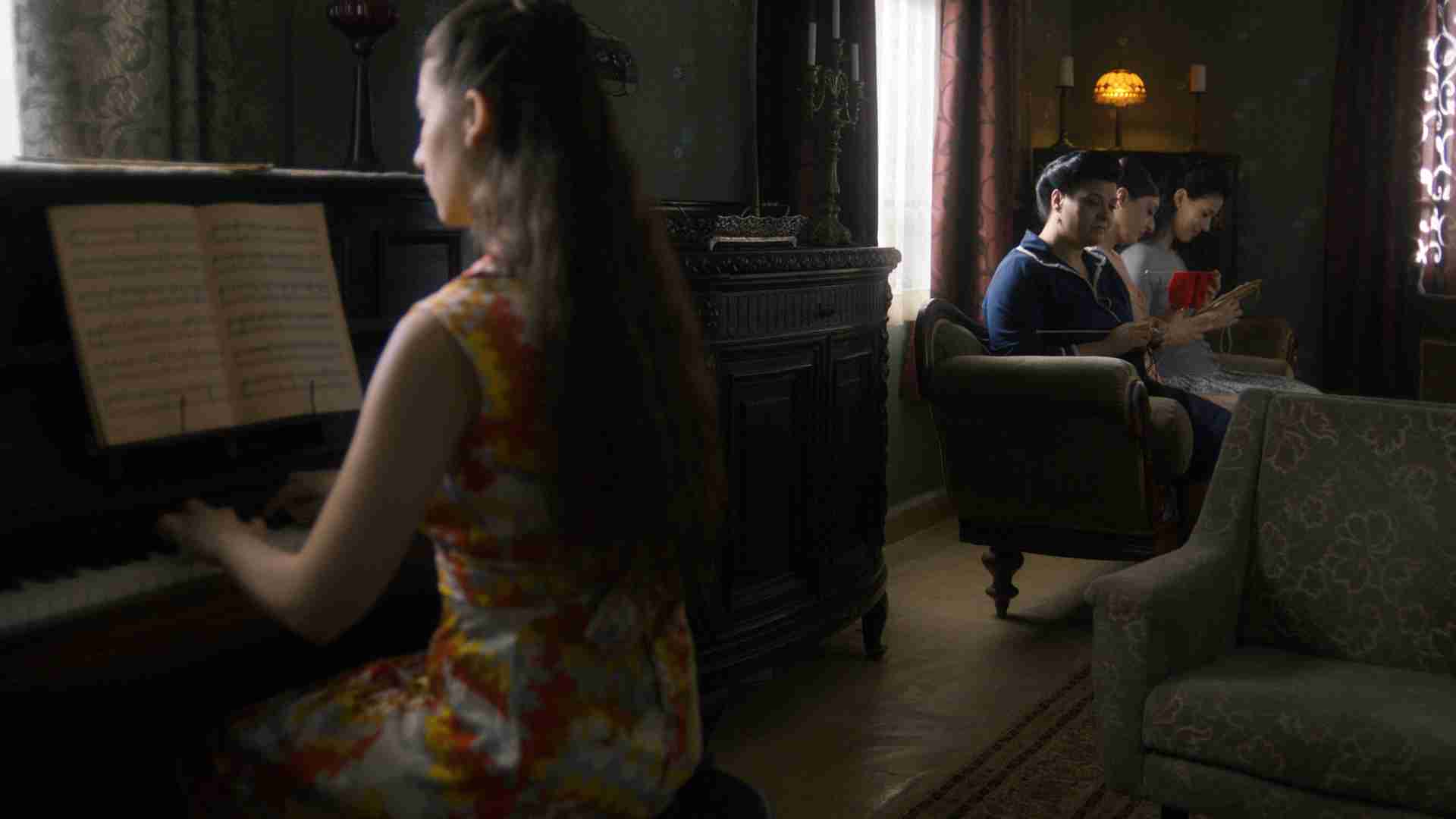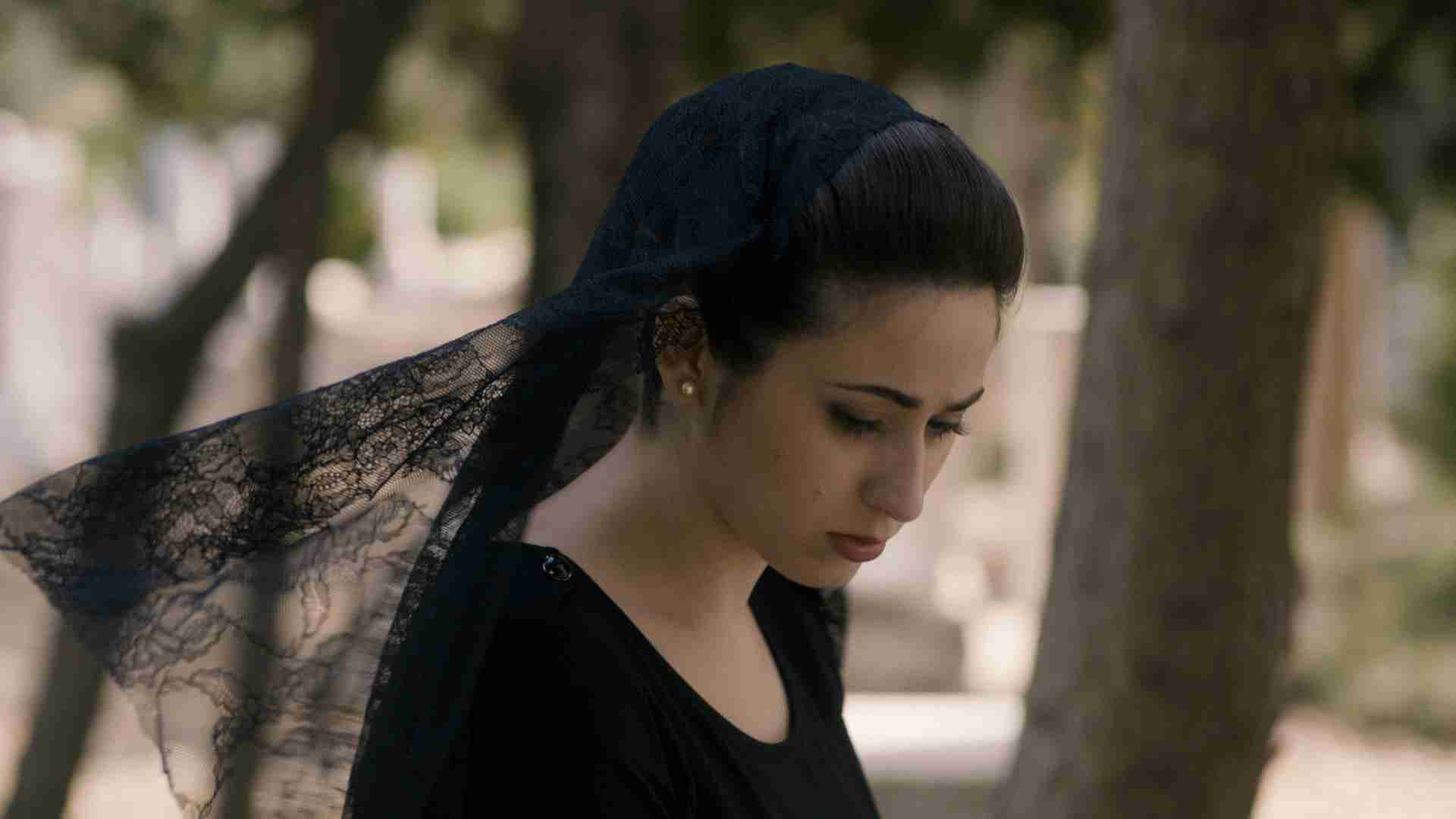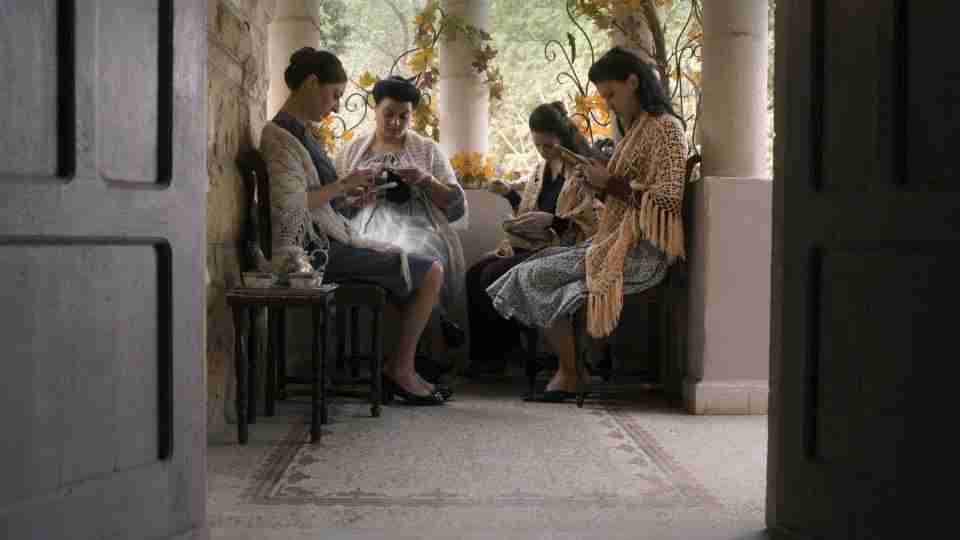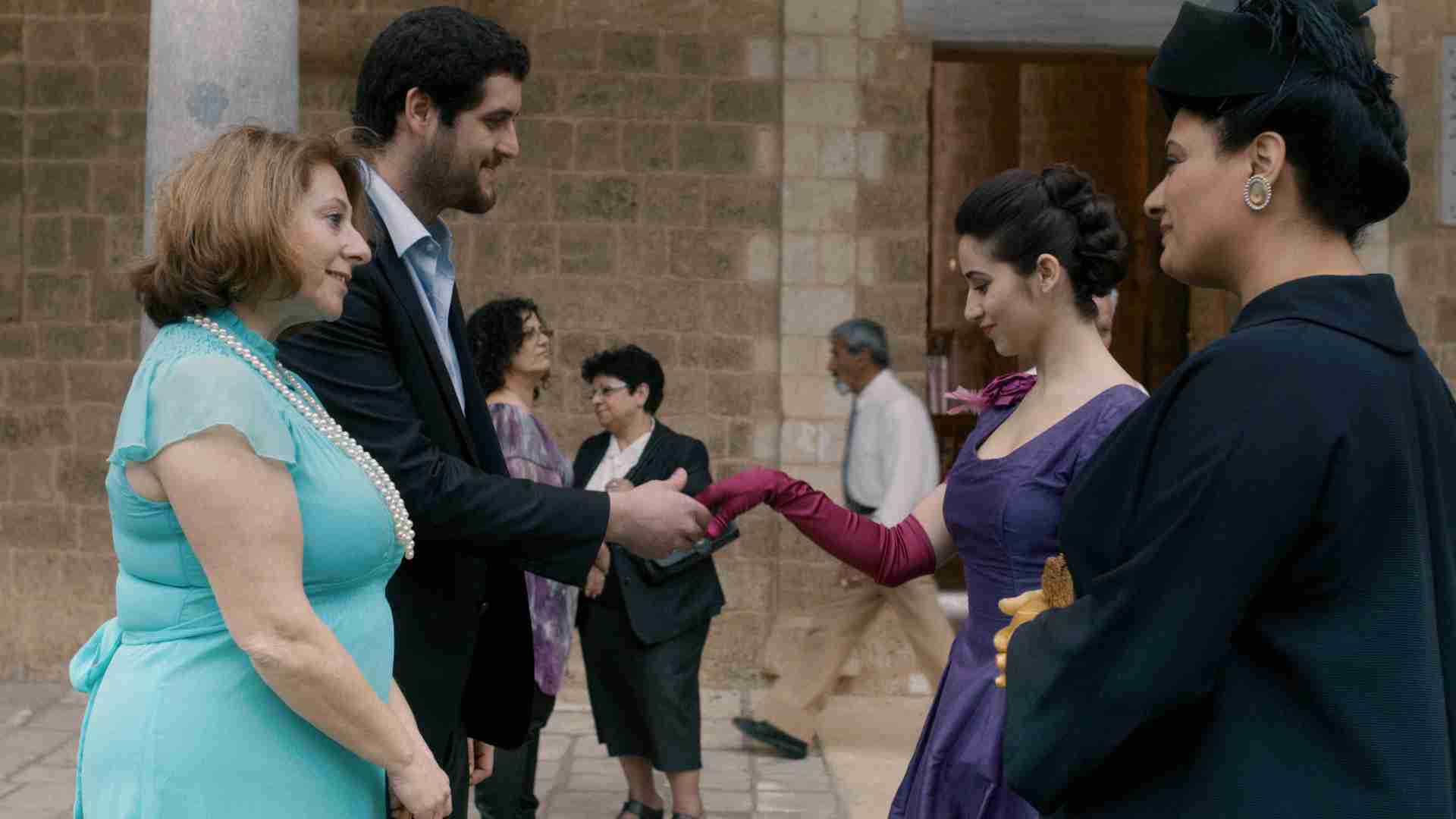Suha Arraf is a Palestinian filmmaker based in Mi’ilya in the Galilee in Israel. Arraf is a journalist by training. This interview with Arraf was conducted following the recent screening of her debut feature film, Villa Touma, at the Cleveland International Film Festival in the United States.
Isis Nusair (IN): Where did the idea for the film, Villa Touma, come from?
Suha Arraf (SA): I got the idea for making the film in 2000, during the Oslo Peace Process (and before the start of the second Intifada). I was working as a journalist at the time, and wrote a profile on the city of Ramallah. The early Oslo years were full of hope, where some Palestinians were allowed to return from the diaspora. The city was flourishing with cultural activities and festivals. The mayor suggested that I visit Hotel Ramallah (Hotel Madam Odeh), located next to al-Manarah Square. He said that it was one of Ramallah’s monuments. The two-story hotel was named after its beautiful owner, Aida Odeh. She lived on her own at the hotel that had beautiful furniture made from carved wood, and the beds were covered with white sheets. The garden was not neglected, but was without life. The hotel had burning incense, and there was something sad about it. It is as if you went back in time the minute you stepped foot in it.
Before 1967, Flamenco groups from Spain and Italy used to perform at the hotel. Palestinians from Inside the Green Line would go there for their honeymoons. Omar Sharif, Faten Hamama, King Hussein of Jordan, and Shukri al-Qawatli used to stay there. The hotel closed after the 1967 war. The city changed a lot after the war, and part of the Palestinian aristocracy left, part was forced out, and part closed themselves off. Ms. Odeh lived with her memories away from the occupation and its displacement. Her eyes would shine as she was telling me about the past. There is something very powerful about this image.

IN: Why was it important for you to show in Villa Touma the intersection between class, gender, and religion?
SA: The film is political without necessarily dealing directly with politics. It depicts time, time that stops as was the case with Hotel Madam Odeh. This is a period movie that takes place during the second intifada. It is a metaphor about the current Palestinian condition and the war of attrition. The wall around the villa that we built in the film represents the wall built by Israel to surround the West Bank. I chose to focus on the house from the inside to depict its isolation. The film traces the internal occupation, the ticking clock, and the sounds of the birds. As the situation becomes more intense, you start hearing the sound of a helicopter, and of cars honking from the outside. Slowly, this isolation starts to fall apart.

IN: Was your intent to diminish hope by emphasizing the inevitability of failure or collapse?
SA: I wanted to leave some hope. The baby in the film will live and life will go on. There was also a shift in generational solidarity among the three sisters with Badea, their niece. I come from Mi’ilya. It is a village in the Galilee and we are farmers. We do not have aristocracy. In order to make this film, I conducted thorough research. I looked at old Palestinian houses were many of the drawings on the walls were made by Lebanese artists before the 1948 war. These houses had their own character. We filmed in a house in Haifa that belonged to a Palestinian family that sold it to a Jewish investor as a result of a disagreement between the owners. We broke part of the walls in the house and put in windows.
Part of the problem with cinema is its slogans, and the binary division between the hero and the victim. Where is the human in all of this? From the outside we are represented as “terrorists” or “victims” and we represent ourselves as either “heroes” or “victims.” Humans are more complicated than that. I wanted to build realistic characters that reveal strength. I wanted to present characters that are close to people’s realities and not made for cinema; characters that we can identify with. I did not want them to carry slogans.

IN: What is the significance of having all four main characters in the film be women?
SA: I like to write about women and depict their complexity, internal lives and will power. I am writing at the moment a script for a new film where the central characters are women. Women are usually depicted as either mothers or wives of martyrs or of prisoners. The women in the film are complex, with love stories that blend with politics. We lose our humanity when we are represented in one-dimensional ways.

IN: How was the film received?
SA: The fuss about the film started as it was about to be screened at the 2014 Venice Film Festival, and following the Israeli war on Gaza. The Israeli image abroad was in the dirt, and the Israeli media left every other thing and focused on me. They came and said, “since seventy percent of the funding of the film is Israeli, the film is ours and not yours.” Usually films belong to the director and the producer and I am both in this case. We [Palestinians in Israel) are more than twenty percent of the population of Israel. We actually pay more than fifteen percent of the cultural budget of the country while benefiting from only one percent. They wanted me to call the film “Israeli” and not “Palestinian,” and wanted the film to represent Israel at festivals abroad.
I went to bed one day as a filmmaker and woke up the next day accused of being a criminal and a fraud. Initially I remained silent then I wrote an article at the Haaretz Newspaper titled, “I am an Arab, Palestinian and Citizen of Israel–I have the Right to Define my Own Identity.”
They accused me of stealing money from the state of Israel, and there is currently a seizure warning without a court order against me. Adalah, the Legal Center for Arab Minority Rights in Israel, is handling my case. The Israeli authorities have no legal basis and we plan to go to court. There is nothing in the contract that will allow them to win the case. It is the psyche of the occupier to claim, “it is all ours.” They changed current contracts and now any film with Israeli funding needs to be called Israeli. This means that I cannot approach Israeli funding organizations to support my future work. Maybe it is time that we create a Palestinian fund for cinema. It is a war on culture since cinema reaches a very wide audience.
The film is succeeding. It had participated in more than forty international film festivals and the list is still long. I am doing the distribution for the film, and the reception among the Palestinian and foreign audiences has been great.